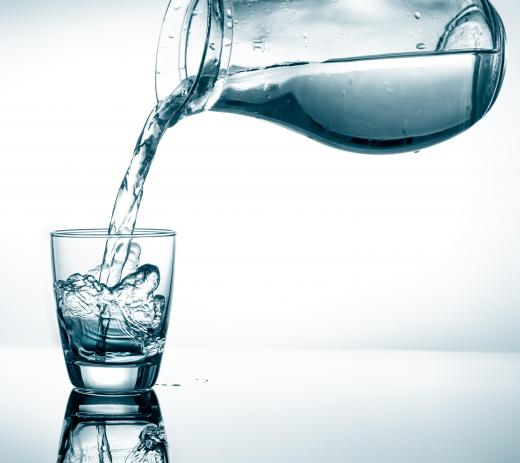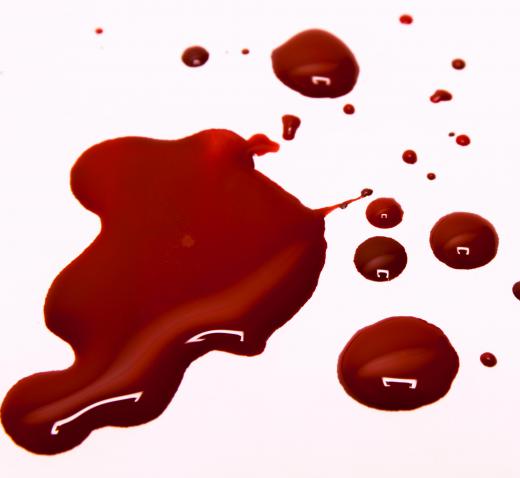What is Centipoise?
 Nicole Madison
Nicole Madison
Described as a unit of dynamic viscosity, centipoise is the amount of force necessary to move a layer of liquid in relation to another liquid. It is considered the standard unit of measurement for fluids of all types, and is one hundredth of a poise. The symbol for centipoise is cP or cps, depending on the source.
Though centipoise may seem a very technical and difficult to understand term, understanding it is simple once a person has a firm grasp of viscosity. Viscosity is the measure of a fluid's resistance to flow. An easy way of understanding it is to think of viscosity as fluid friction. Thinner liquids, such as water, have lower viscosities, while thicker liquids like oil have higher viscosities.

A viscometer can be used to measure centipoise. A viscometer is an instrument that measures the force required to rotate a spindle at a specific rate. There are other types of viscometers as well; some use objects, like bubbles or balls, for measuring. Rheometers or plastometers may be used to obtain centipoise measurements of high-viscosity fluids or molten polymers.
Water at approximately 70°F (21°C) is about 1 cP. When determining centipoise, all other fluids are calibrated to the viscosity of water. Blood has a viscosity of 10 cP, and ethylene glycol has a viscosity of 15 cP.
Thicker liquids like honey have higher viscosities. For example, honey has a viscosity of 2,000 cP and molasses has a viscosity of 5,000 cP. Lard has a viscosity of a whopping 100,000 cP.

The average person may never encounter a need to learn much about viscosity and centipoise. However, those in science and engineering fields, as well as college students in related majors, may find it to be a vital unit of measurement. In fact, these measurements are used in everything from fuel and adhesive industries to certain types of food processing and refrigeration-related industries.
AS FEATURED ON:
AS FEATURED ON:














Discussion Comments
How can I convert from seconds into centipoise?
What's the difference between oil and fluid?
Which unit is used to measure viscosity in a viscometer?
I am looking for the force of a electromagnetic stirrer on a hot plate. One says it can mix a solution of 700 centipoise and the other brand says it is able to mix up to 10 liters of water. I guess they mean it creates a vortex up to 10 liters. Do you have an idea which is the strongest?
@anon30162: The difference between Centipoise and centistokes: "The centistoke is the ratio of a liquid's absolute viscosity in centipoise to the density of the liquid."
Centipoise divided by specific gravity is equal to centistokes.
". . . amount of force necessary to move a layer of liquid in relation to another liquid" -- if it is a force, I would expect dimensions of:(mass*distance)/time^2. Is there a direct conversion to Newtons, or does it take area into count, and have units of pressure?
What is the difference between centipoise and centistokes? Is there a conversion formula? Why two systems of measurement of the same thing?
Your article mainly aimed at fluids we can assume gases have a viscosity?
Post your comments